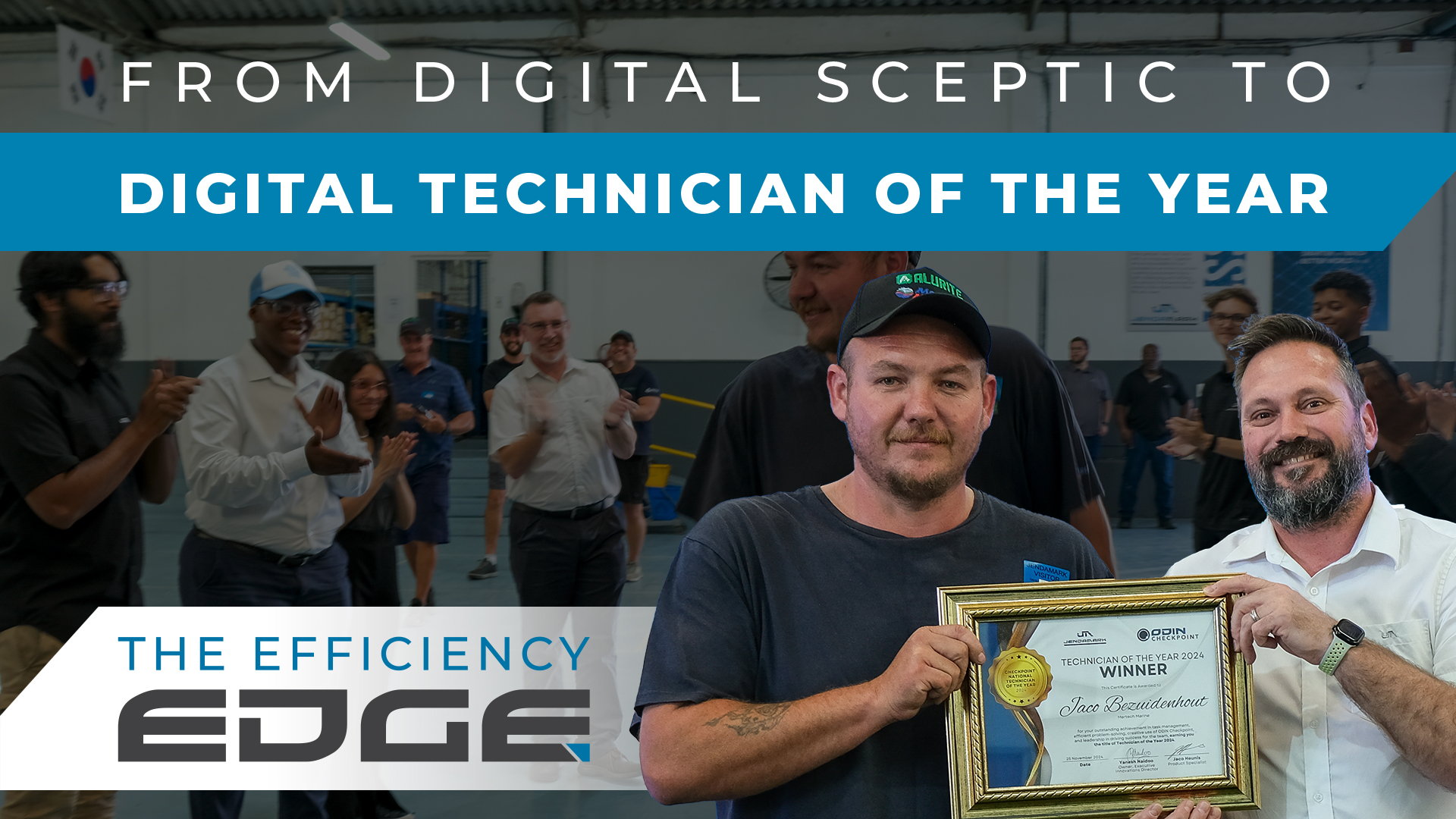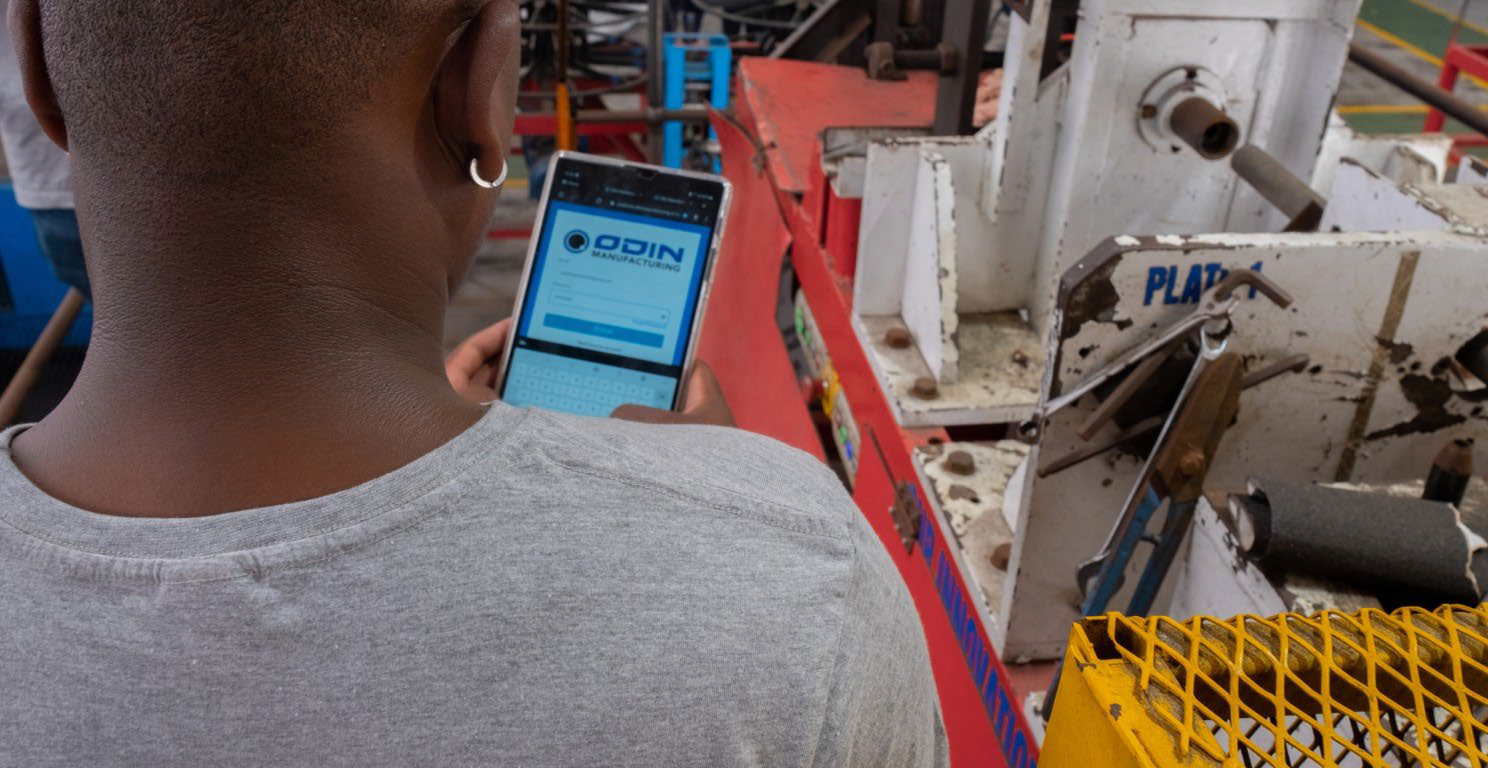
Jaco’s new-found enthusiasm for this revolutionary tool saw him earn the inaugural title of 2024 ODIN Checkpoint Technician of the Year. Here’s what he had to say:
Q: What is your role at Mertech Marine and what are some of your day-to-day responsibilities?
A: I’m on the maintenance side. I oversee the mechanical section. So, I come in and check all the machines and the job cards. As the guys come in, I send them out if there are major things to be done.
Q: What was the biggest challenge you faced in managing daily tasks?
A: Job cards. That was difficult. The pain of getting the paperwork together, physically writing out the job cards, keeping track of the paperwork (and sometimes losing the papers), and then capturing the work done afterwards. It was just a big headache.
Q: Before your introduction to ODIN Checkpoint, how convinced were you that a digital solution could solve your problems?
A: I’m old school, so to me it sounded like a load of rubbish, to be honest. When I got going with it, I thought, hell, this works amazingly well and it’s so quick.
Q: With adding a digital solution, what does your new process look like?
A: Previously, my morning task management and admin used to take me up to an hour and a half. And then I still had to go and help with the jobs too, so I kept falling behind. Now it takes me half an hour maximum – checklists, job cards, the whole shebang.
Q: Now having worked with it, what do you like most about going digital?
A: It’s so easy and comfortable to keep track of everything. That’s what I’ve discovered. And it’s quick. It’s just so much better for me.
Q: Why do you think you were chosen as Technician of the Year and what does this award mean to you?
A: I don’t know why! (Laughs.) It means a lot. It means I’m doing something right.
For digital transformation to really stick and make a tangible difference to your operational efficiencies, it needs to become a way of life for your organisation. The human factor can be more of a barrier to adoption than the technologies themselves. In this section, we explore some of the challenges standing in the way of successful digital adoption.
1. Leading lifestyle change
One of the biggest issues in many organisations is that leaders treat digital transformation like a once-off project.
The problem with this is that a project has a set budget and end date, whereas digital adoption demands an open-ended approach because it represents a whole lifestyle change for the organisation.
From the outset, it’s important for leaders to understand that the first technology they invest in might not be the perfect fit. Rather than abandoning the whole concept of digital transformation at the first hurdle, it should be viewed as a learning process en route to finding the right combination for your environment.
2. Starting small, thinking big
We always suggest a customer start small and go through the whole process of adoption, seeing what it takes to get employees comfortable with the tech, adapting it for your environment, and assessing the outcomes. If it works for you, you can scale up and take the next steps towards continuous improvement.
The first steps on your journey might be simple digitisation, where you eliminate some paperwork, or create some real-time visibility. After that, you can look at automating some processes. The real lifestyle change comes further down this road of digital transformation – where you are starting to create an intelligent, data-driven enterprise.
3. Engineer-led implementation
When it comes to choosing a consulting firm to guide you on this journey, manufacturers should look to those with hands-on industry experience.
The shop floor is where much of the change will happen, so service providers must understand the technical challenges and system integrations required when it comes to implementation.
Scaling an Industry 4.0 solution is not the same as other corporate cloud-based platforms because integrations to hardware like electrical panels and PLCs present a more complex challenge.
In fact, when putting together an implementation team for an Industry 4.0 solution, it should not be IT-led. Because of the tech’s impact on the shop floor and the outcomes it must deliver for the business, we have learned that it should be engineer-led, with the IT experts in a supporting role.

4. Big Brother is watching
While top management might drive the implementation of a digital solution for your business, resistance sometimes arises further down the chain.
Surprisingly, it’s not always the operators and technicians who kick against new digital tools – because these ultimately make their lives easier (as you’ll see below).
Often the resistance comes from middle management who may fear the transparency that comes with real-time access to production data. Managers may be concerned that this data will skew their reporting and show up their performance in a negative light.
Because the data allows direct visibility from operator or technician to CEO, there could be an underlying fear that Big Brother is watching. Clear communication from leadership that these digital tools are just there to bring efficiencies, not act as a whip, is vital in allaying insecurities.

5. Educating the workforce
So, how does one get your whole workforce excited about embracing digital transformation as a lifestyle?
Education and access to the tech are absolutely essential. Employees will only develop an appreciation for the tech if they have the hands-on opportunity to learn it and use it, and see what it can practically do to help them in their day-to-day roles.
Preparing the user is critical to your organisation’s digital transformation. Do not make the mistake of being so focused on the implementation of the tech that you lose sight of the users and whether they are ready for it.
The human factor remains the biggest barrier to successful digital adoption – and also the greatest indicator of long-term success.
Check out our other Resource sections:

Sign up to get the latest thought leadership articles – written by our experts – delivered straight to your inbox.